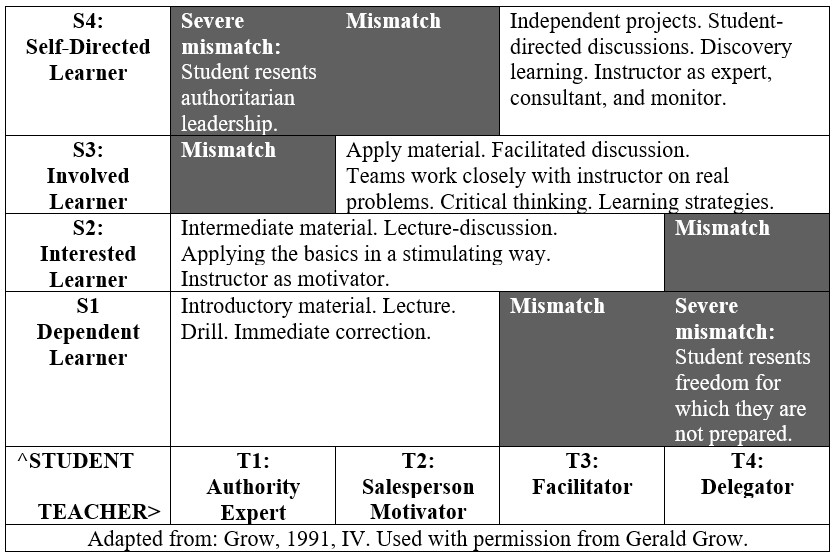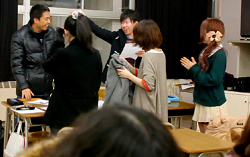Self-Directed Learning Model
Such a challenging approach to classroom management can offer rewards for students and faculty. However, how can faculty develop such seemingly extraordinary classroom management flexibility and teaching style? Gerald Grow's [4] Self-Directed Learning Model [see Table 1] provides a framework for helping faculty develop strategies for adjusting teaching styles to match the diverse needs of individual learners, as follows:
Stage 1: Dependent Learner (S1)
Dependent Learners have low self-direction. They may have limited academic and professional experience, likely expecting a pedagogical learning model. In other words, these learners may need a teacher to tell them what to do. Learners in this stage typically require a pedagogical approach. An Authority Expert (T1) covers the basics, lectures, tests, and provides learners with immediate correction. At this stage, the instructor's key objective is to develop the Dependent Learner toward becoming more self-directed in their academic endeavors.
Stage 2: Interested Learner (S2)
Interested Learners may be motivated and confident, but they lack experience or knowledge of the subject. Interested learners may need instructors who can act as a Salesperson Motivator (T2) who teaches by covering intermediate material, conducting lecture-discussions, and showing students how to learn. The instructor at this level also serves as a motivator who can create a stimulating learning environment that supports the learner toward self-direction.
Stage 3: Involved Learner (S3)
Involved Learners are developing self-direction. They have skills and abilities but need a guide to help them apply or relate knowledge to life. Faculty serves as a Facilitator (T3) who helps the Involved Learner make connections between classroom and life, works closely with teams to solve problems, allows learners to develop and apply critical thinking skills, and build lifelong learning competencies. This stage seems to correlate most closely with facilitation models typically used in adult universities. For example, institutions that attempt to develop lifelong learning competencies by providing extensive support, structure, and environment that helps students become self-directed, collaborative learners.
Stage 4: Self-Directed Learner (S4)
Self-Directed Learners are willing and able to plan, execute, and evaluate their learning with or without someone acting as a guide. This learner thrives in a pure andragogical environment, working independently on projects, engaging with other learners, and discovering learning. The faculty fills the role as a delegator for the self-directed learner, providing consultation at the learner's request, and monitoring the learner's progress. For example, a program that assumes that adult students are entirely self-directed, providing limited structure or support from institutions or faculty.
-----





